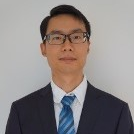Offshore Installations and Wave Power Generation
A special issue of Journal of Marine Science and Engineering (ISSN 2077-1312). This special issue belongs to the section "Ocean Engineering".
Deadline for manuscript submissions: closed (1 August 2023) | Viewed by 2366
Special Issue Editors
Interests: offshore wind turbine; wave energy converter; modular floating structure
Interests: marine structures; hydrodynamic analysis; model tests
Special Issue Information
Dear Colleagues,
Various types of offshore installations are needed in coastal areas and ocean zones. Traditionally, offshore structures have been mainly constructed for the offshore oil and gas industries. To tackle climate change and to meet energy demands, innovative offshore installations can be considered, such as floating renewable energy facilities and floating transportation infrastructures. Among the floating renewable energy facilities, many wave energy converter (WEC) technologies are still at a pre-commercial stage, and significant research and development are required to improve their competitiveness. For example, the integration of WECs in multifunctional offshore structures can be an interesting alternative. On one hand, WECs can supply power to integrated structures, e.g., aquaculture platforms, wind turbine platforms, oil and gas platforms, or modular floating structures. On the other hand, WECs can serve as a floating wave-breaker to reduce wave loads acting on integrated structures.
The aim of this Special Issue on “Offshore Installations and Wave Power Generation” is to publish high-quality papers, which offer original ideas and new methodologies, with a clear indication of the innovations with respect to existing solutions. Topics addressed in this Special Issue may include but are not limited to:
- Innovative offshore installations;
- Numerical analysis of offshore installations;
- Experimental techniques for offshore installations;
- Inspection, repair, and maintenance of offshore structures;
- Modular floating structures;
- Full-field offshore experience and real data of offshore installations;
- Design and analysis of wave energy converters;
- Wave energy converters combined with offshore wind turbines;
- Integration of wave energy converters into multifunctional offshore structures;
- Optimization of wave energy converters;
- Marine renewable energy installations.
In this Special Issue, we welcome all related research. Contributions to this collection will significantly enhance the development of offshore installations and wave power generation, helping to accomplish their commercialization.
Dr. Nianxin Ren
Dr. Zhe Ma
Dr. Zhiyu Jiang
Guest Editors
Manuscript Submission Information
Manuscripts should be submitted online at www.mdpi.com by registering and logging in to this website. Once you are registered, click here to go to the submission form. Manuscripts can be submitted until the deadline. All submissions that pass pre-check are peer-reviewed. Accepted papers will be published continuously in the journal (as soon as accepted) and will be listed together on the special issue website. Research articles, review articles as well as short communications are invited. For planned papers, a title and short abstract (about 100 words) can be sent to the Editorial Office for announcement on this website.
Submitted manuscripts should not have been published previously, nor be under consideration for publication elsewhere (except conference proceedings papers). All manuscripts are thoroughly refereed through a single-blind peer-review process. A guide for authors and other relevant information for submission of manuscripts is available on the Instructions for Authors page. Journal of Marine Science and Engineering is an international peer-reviewed open access monthly journal published by MDPI.
Please visit the Instructions for Authors page before submitting a manuscript. The Article Processing Charge (APC) for publication in this open access journal is 2600 CHF (Swiss Francs). Submitted papers should be well formatted and use good English. Authors may use MDPI's English editing service prior to publication or during author revisions.
Keywords
- offshore installations
- marine structures
- wave power converter
- marine renewable energy platform
- modular floating structure
- numerical simulations
- experimental techniques
- inspection, repair, and maintenance







